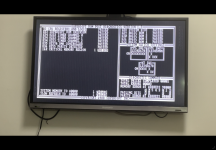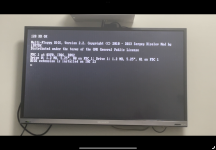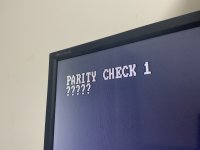modem7
10k Member
Maybe, but of course, to successfully read/write RAM, the entire RAM subsystem needs to be working. That involves many components, some common to other subsystems. One example of a component in the RAM subsystem is the delay line.As I guess, there is a problem with Base 16K RAM.
But it can't be just only the RAM subsystem that is faulty. TEST6083 fails, and that has nothing to do with RAM. (TEST6083 runs from ROM, does not use RAM, and only manipulates a pin on the 8255 chip.)



